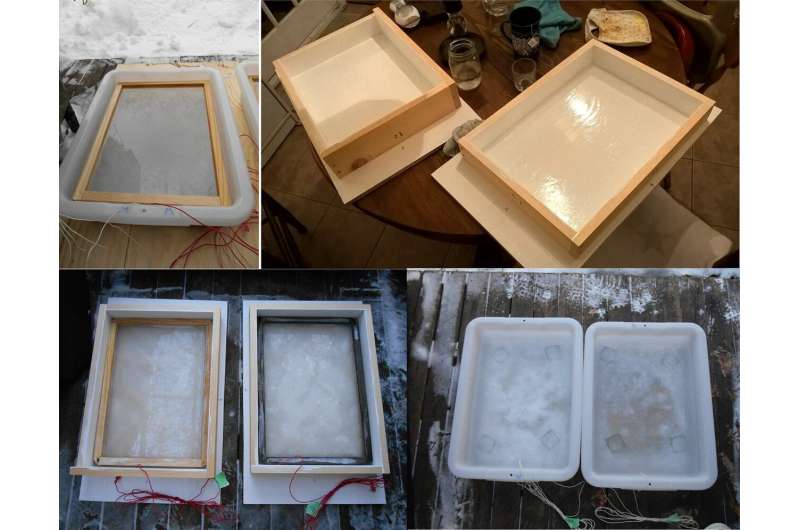This article has been reviewed according to Science X's editorial process and policies. Editors have highlighted the following attributes while ensuring the content's credibility:
fact-checked
peer-reviewed publication
proofread
Study explores ice-based electricity generation

Last year, researchers from the US and Canada reported in PLOS ONE creating electrical batteries from ice. The electrical output is modest, just 0.1 milliwatt. But this may be a sign of good things to come. The scientists worked over the course of two seasons to design and produce electrochemical cells that will work to generate electricity.
Dr. Daniel Helman and Dr. Matthew Retallack met at the European Consortium for Political Research in Montreal, Canada in 2015. Helman was presenting ideas about solar panels from ice, and Retallack was the discussant of the session.
"I think there was a mutual respect and love of research," says Helman. They went on to develop different prototypes. The model that finally won out uses acid to create a difference in pH between two layers of ice plus a few additives.
The most mobile charge carrier in ice is the proton, so it makes sense to think of protons traveling from one layer to the other because of the pH difference. The travel of charged particles is how batteries generate electricity.
In this case, table salt, kaolinite clay and monopotassium phosphate help to donate or receive charged particles, along with muriatic acid (HCl). A mesh screen and sheet aluminum were used as the electrodes.
The materials used in the experiments are all commonly available, and commonly regarded as safe. It makes one wonder what would be possible using more optimized materials. Moreover, photosensitive particles added in can probably produce dye-sensitized solar cells.
The original experiments for dye-sensitized solar cells used chlorophyll taken from spinach to change local pH in response to sunlight. While the electrical output may be small, the point is not lost that large swaths of land at high latitudes might be available.
Fields, lakes or other open land might be safely put to good use in humanity's quest to transition away from fossil fuels. The additives in this experiment were chosen for their relative safety in the environment.
The generation of electricity from ice also sheds light on one of the more enduring questions facing science right now. Where did life come from? Current thought is that organisms originated either in small ponds near volcanic, geothermal fields, or near mid-ocean ridges. But there is a problem. RNA gets diluted without a membrane, and then cannot act as a catalyst.
An icy setting solves this problem. RNA may remain concentrated in small regions on, for example, the ice of a comet or meteorite. Thus, generation of electricity from ice could provide a proto-metabolism for the start of organismal development with self-catalyzing RNA on such icy meteorites (like the Murchison meteorite) or on an early Snowball Earth.
Both of these ideas are not so far fetched. Solar panels from ice may be useful in some settings. And an icy worlds hypothesis for the origin of life may explain why we don't see any of the early stages here on Earth now.
Dr. Helman is currently a visiting assistant professor of Environmental Studies at Wofford College in Spartanburg, South Carolina. Dr. Retallack ran the experiments while at Carleton University in Toronto.
More information: Daniel S. Helman et al, Electrochemical cells from water ice? Preliminary methods and results, PLOS ONE (2023). DOI: 10.1371/journal.pone.0285507

















